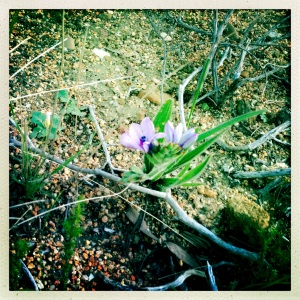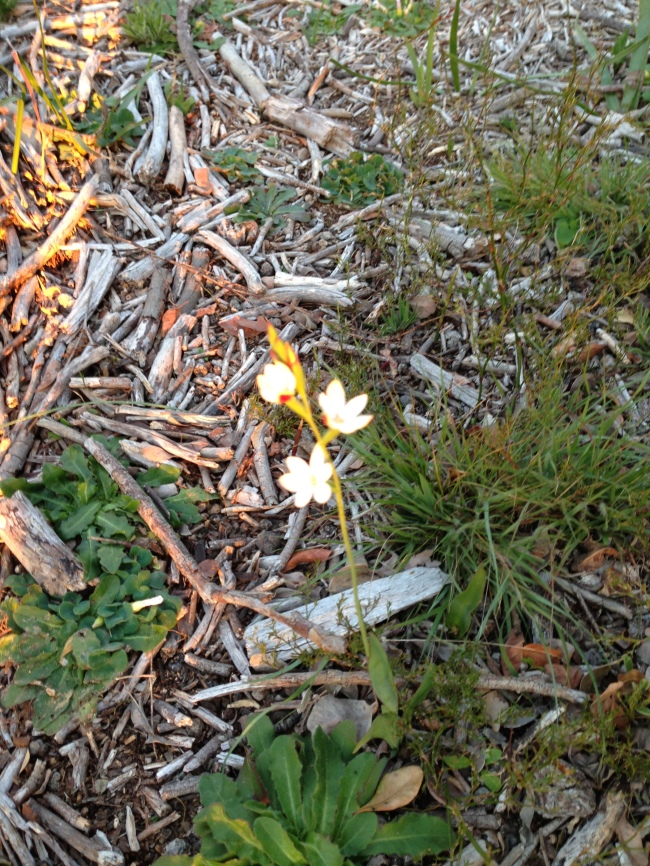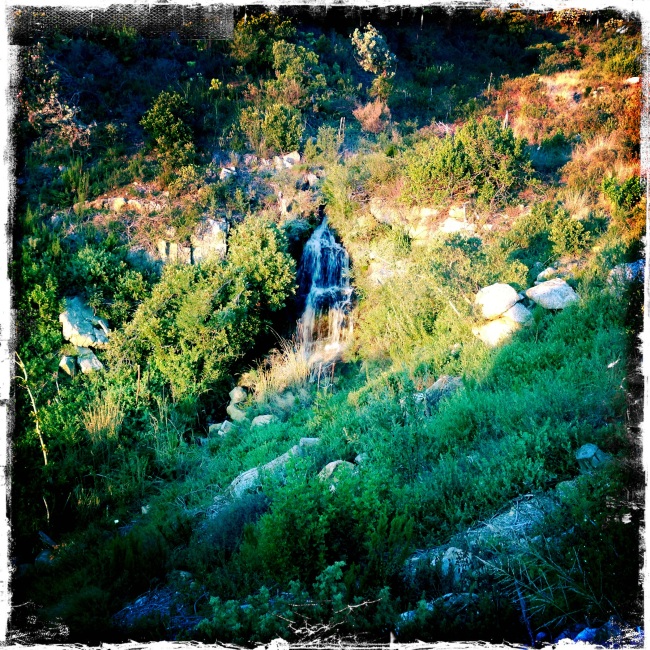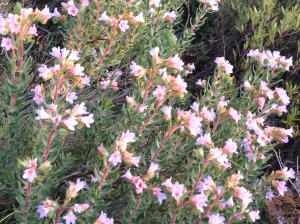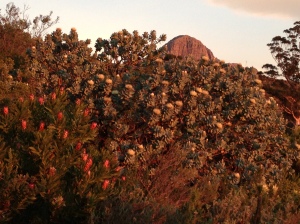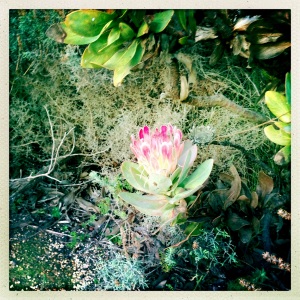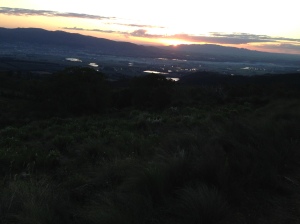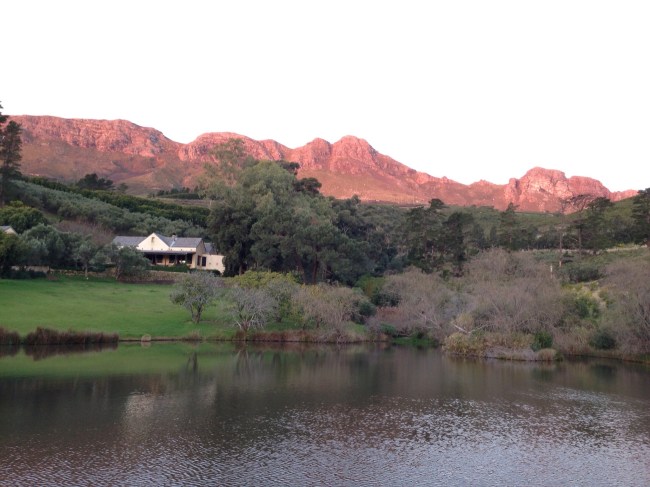Home. The desert sands of Qatar behind me at last. It was a shock to return to glorious green after the thick humid sandy air of Doha. It seems it’s done nothing but rain since we left home three weeks ago and the farm has a rich sodden feel to it, with water roaring through the river and tumbling down the waterfall. The roads are in need of maintenance, full of rivulets and potholes but the seeds I planted in the garden before we left have all sprouted into healthy young plants and the fynbos is settling into a winter burst of life. Seamus, the senior wolfhound, is joyous at my return and cannot bear to leave my side.
The dogs and I went for an evening walk, inspecting some of our usual routes, the dogs looking for new smells, and me looking for new flowers. We started down in the stream below the house that leads to the damn. The banks are lined with Arum Lilies at this time of year. Just as the luminous grasses have disappeared the lilies flower along the rivers and roads all winter and their beauty speaks for itself. We have a few months of them ahead, and there will be a lot more pictures to come.
Arum Lilies
The great thing about this blog is that it focuses the mind on home, on the magnificence of this land and the plants that grow here. I’ve seen Chasmathe all over the Cape, they remind me of the Montbretia that grown wild in Ireland, another South African wild flower that grows all over Ireland’s verges and banks in the summer. At first I thought it was the same flower but Montbretia doesn’t grow in this part of the world, it belongs further north in a summer rainfall area. This Chasmanthe is lovely, another of the anchors of a certain time of year, this winter time, when growth is rich and lush and yet only a herald of things to come.
Chasmanthe, most likely floribunda, but to be verified
When we moved to the farm eight years ago this little red creeper was one of the first flowers to awake my interest in fynbos. The flowers are tiny, smaller than my little fingernail and they appear suddenly in midwinter, winding around the stems of thicker fynbos. Despite their tiny size the jewel-like coral jumps out of the greenery and draws the eye. We will have them until mid-spring or later, all over the farm.

Microloma tenuifolium
We could hear the waterfall long before we saw it – with the rainfall we’ve had in June the rivers on the farm are roaring and the land feels replenished.

As we walked along the new road that leads to the waterfall this enchanting sight greeted us. I don’t know what to say or even think about the
pelargoniums; though are stunning, charming, and endlessly delightful the sub-species seem impossible to identify. Our new road is a pelargonium nursery and they thrive here all year round. At least this one allowed me to take a good picture – gracefully gleaming in the evening light.

Pelargonium – subspecies unknown

Pelargonium
The books have a few pelargoniums but they don’t seem to flower at the right time of the year. We have dozens and the best I can do is document them and find a real expert. Some of those that I’ve transplanted to the garden are doing really well, perhaps that will help. They are endlessly endearing. My grandmother grew them, pelargoniums and geraniums, nursing them through the Irish winters. She would have loved this place; not lush like Ireland with it’s dense choking green; more selective; intense; dramatic – she would most definitely have appreciated the drama. It was her birthday on 22nd June, just after midsummer. I was in Doha, so missed the shortest day of the year on the farm. Today is the shortest day we will see this year, and this is the most north-westerly sunset, far over the Paarderberg.

By mid-summer this sun will set far to the South of Table Mountain.
My love of botany is definitely inspired by her, and by my stepgrandmother, both of whom were dedicated and knowledgable horticulturalists. I thought of them both this evening as we descended in the gloom. Two women, one Irish, one English, both Catholic, both of whom were born in one world war and raised their children through the next. Gracious women, much loved, characters, who instilled in us both values and manners. They loved their gardens and gardening brought them together, unexpectedly and into a lifelong friendship. They admired one another and both of them would like to know they are remembered and that they continue to inspire us.
The Ericas are coming out all over the farm and I have not yet identified this one – a detailed book on Ericas as we as Pelargoniums is most definitely called for. The Erica family runs to 660 subspecies in the fynbos region, so we can’t expect to identify them all, but it will be fun to see how many we have on the farm and I will start a library page on them soon.

















